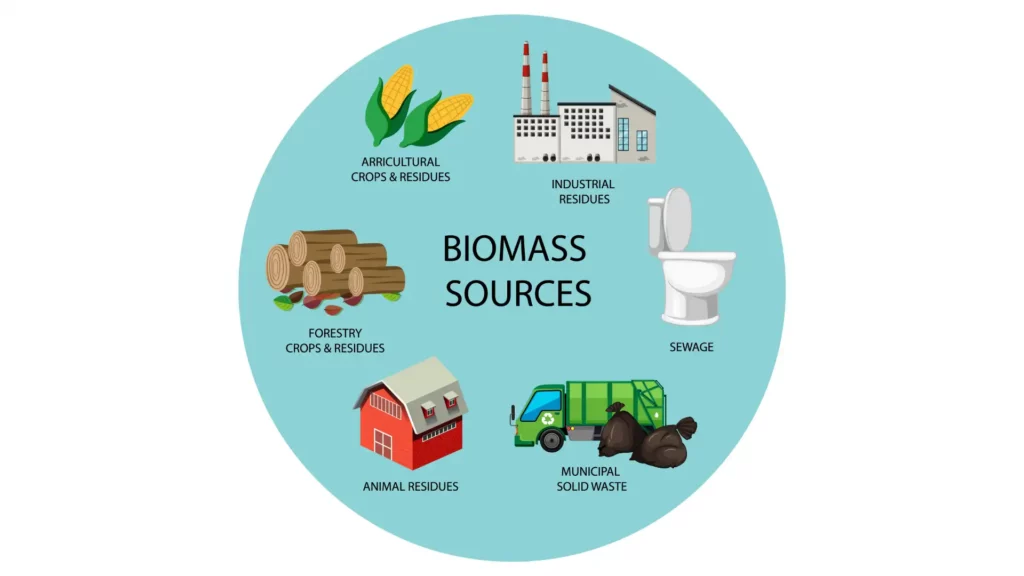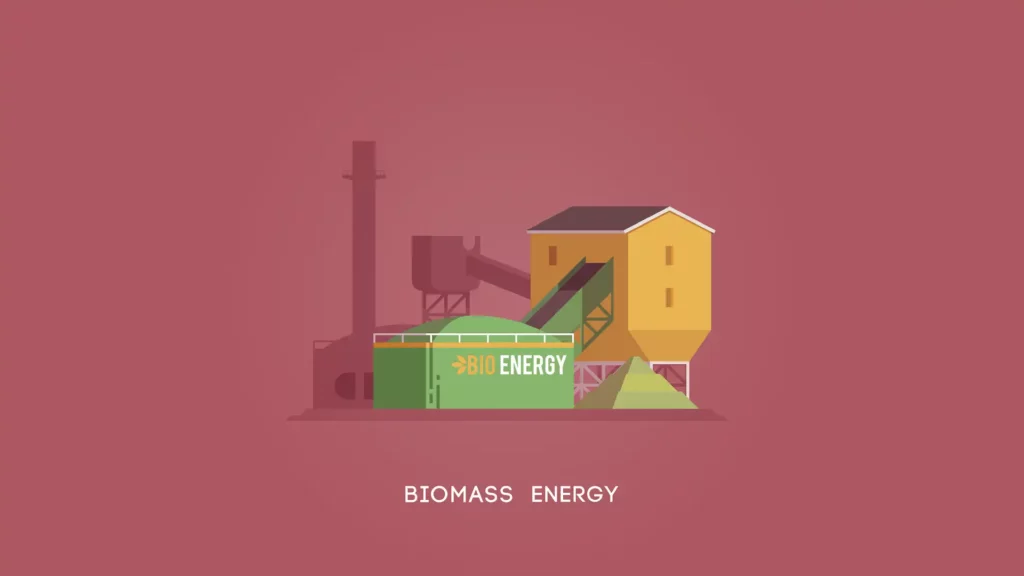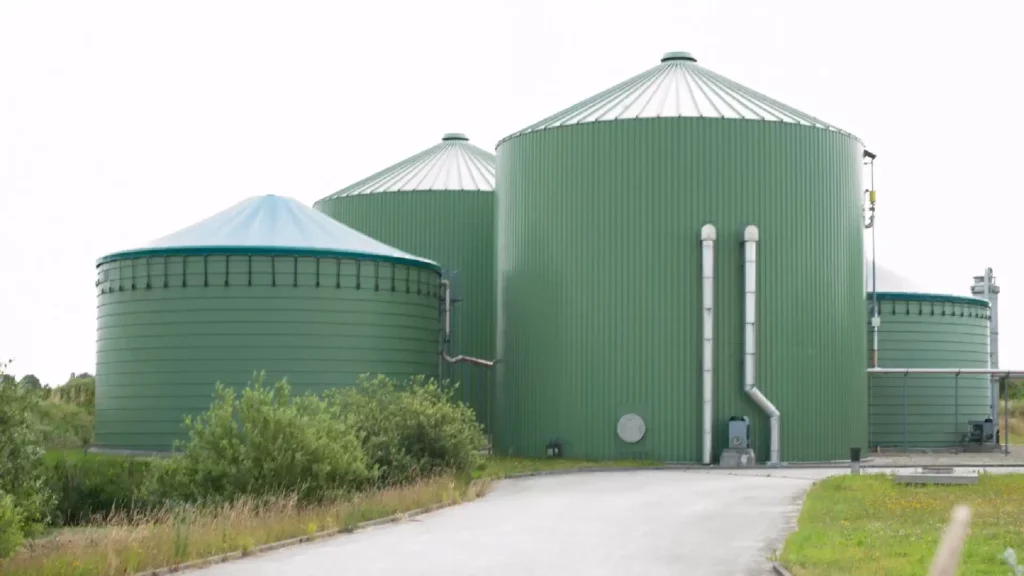Biomass energy storage refers to the process of storing the energy produced from organic materials for later use.
This capability is essential for managing supply and demand, providing energy stability, and ensuring the continuous availability of power regardless of production fluctuations.
But, can biomass energy be stored effectively to meet these needs? Let's dive deeper.
Understanding Biomass Energy Production
The inquiry into whether can biomass energy be stored is pivotal in the discourse surrounding renewable energy solutions, presenting affirmative insights into the possibilities and methodologies for preserving this biomass energy source.
Biomass energy, derived from organic matter such as plant material and agricultural waste, can indeed be stored through various innovative techniques, each tailored to the form of energy it produces.
Thermal energy derived from biomass, for example, can be stored in insulated tanks or with phase change materials, whereas chemical energy, manifesting as biofuels like biogas or ethanol, is preserved in specialized containers.

The Importance of Biomass Energy Storage
Storing biomass energy is crucial for several reasons:
- Reliability: Storage ensures that energy is available on demand, even when production cycles do not match consumption patterns.
- Flexibility: It allows for better integration of biomass energy into the existing energy grid, providing a more flexible and responsive energy supply.
- Efficiency: By storing energy, losses can be minimized, and the overall efficiency of biomass energy systems can be improved.
Can Biomass Energy Be Stored? Exploring the Methods
The question of “can biomass energy be stored” can be addressed by looking into the different storage methods available for the forms of energy biomass produces:
- Thermal Energy Storage: For biomass energy converted into heat, thermal energy storage methods can be used. This includes storing heated water in insulated tanks or using phase change materials that absorb and release heat at specific temperatures.
- Chemical Energy Storage: Biomass converted into biofuels like biogas or ethanol can be stored chemically. These biofuels can be kept in tanks or cylinders, allowing for easy energy storage and transport.
- Electrical Energy Storage: When biomass energy is converted into electricity, it can be stored using batteries or other energy storage systems such as pumped hydroelectric storage or flywheels.
- Mechanical Energy Storage: This method involves converting biomass energy into mechanical energy that can be stored and later converted back into electricity or other useful forms of energy.

Benefits of Biomass Energy Storage
Storing biomass energy offers numerous advantages that contribute significantly to its appeal as a renewable energy source. Here's a list highlighting the key benefits:
- Enhanced Energy Security: Biomass energy storage contributes to energy security by ensuring a reliable supply of energy, reducing dependency on fossil fuels and imported energy.
- Stabilization of the Energy Grid: It aids in balancing supply and demand, stabilizing the energy grid, especially when integrating renewable energy sources that have variable production patterns.
- Reduced Environmental Impact: By leveraging organic waste materials and reducing reliance on fossil fuels, biomass energy storage helps in minimizing carbon emissions and combating climate change.
- Economic Development: The development and deployment of biomass energy storage systems can stimulate local economies, create jobs in rural areas, and promote technological innovation.
- Waste Reduction: It offers a practical solution for managing agricultural, industrial, and municipal waste by converting it into energy, thus reducing landfill use and pollution.
- Flexibility in Energy Use: Stored biomass energy can be used across various sectors, including electricity generation, heating, and as biofuel for transportation, offering versatile applications.
- Improved Efficiency: Storage systems can reduce energy losses and improve the overall efficiency of biomass energy production and utilization.

Utilizing Biomass Energy at Home
The concept of utilizing biomass energy at home is gaining traction among homeowners seeking sustainable and renewable energy solutions.
Biomass energy at home can offer an eco-friendly alternative to traditional fossil fuels, leveraging organic materials such as wood pellets, agricultural waste, and even household organic waste to generate heat and electricity.
Utilizing biomass energy at home reduces carbon emissions and supports energy independence, lowering energy bills while promoting environmental sustainability.
Biomass Energy Basics: Understanding the Fundamentals
The concept of biomass energy is gaining traction as a sustainable and renewable energy source worldwide.
At its core, the fundamentals of biomass energy involve converting organic material, derived from plants and animals, into usable energy forms.
Key Insights on Biomass Energy
Diving into biomass energy notes provides a concise yet informative overview of the critical aspects of biomass as a renewable energy source.
These biomass energy notes highlight the significance of converting organic materials into energy, the processes involved, and the environmental impact.
By understanding these essential points, individuals can appreciate the role of biomass energy in promoting sustainability and reducing reliance on fossil fuels.

Types of Biomass Fuels
Understanding the “biomass energy basics” also involves familiarizing oneself with the different types of biomass fuels:
- Solid Biomass: Includes wood logs, chips, and pellets, as well as agricultural waste. Solid biomass can be directly combusted to produce heat or electricity.
- Liquid Biofuels: Such as ethanol and biodiesel, are produced through the fermentation of sugar or lipid-based biomass. These biofuels can be used as cleaner alternatives to gasoline and diesel.
- Biogas: Generated from the anaerobic digestion of organic waste, biogas can be used as a fuel for heating and power generation or upgraded to biomethane, a renewable natural gas.
Significance of Biomass Energy
The significance of delving into biomass energy basics lies in understanding the role of biomass energy in the global quest for sustainable and renewable energy sources.
Biomass energy offers several benefits, including the reduction of greenhouse gas emissions, diversification of energy sources, and the utilization of waste materials.
Moreover, biomass energy systems can support rural economies by creating jobs and utilizing local resources.

Frequently Asked Questions (FAQs) on Biomass Energy
1. What are the key biomass to renewable energy processes?
The transition from biomass to renewable energy processes involves several key methods, including combustion, gasification, anaerobic digestion, and pyrolysis. Each of these processes converts biomass into usable energy forms, such as heat, electricity, or biofuels. Understanding the biomass to renewable energy processes is essential for harnessing the full potential of biomass as a sustainable and renewable energy source.
2. Can you give an overview of energy production from biomass, particularly part 1?
Energy production from biomass part 1 overview of biomass provides a foundational understanding of how organic materials are transformed into energy. This includes the use of agricultural waste, wood, and other organic matter as fuel. The energy production from biomass part 1 overview of biomass sets the stage for deeper exploration into the methods and technologies used to convert biomass into energy efficiently.
3. How does biomass fuel rely on energy from the sun?
Biomass fuel relies on energy from the sun through the process of photosynthesis, where plants convert sunlight into chemical energy stored in organic material. This stored energy is then released when biomass is converted into fuel, making biomass fuel rely on energy from the sun indirectly for its energy content. This solar-derived energy is what makes biomass a renewable resource.
4. How is biomass energy stored for later use?
Biomass energy is stored for later use by converting it into forms that can be easily stored and transported, such as biofuels (ethanol, biodiesel) or biogas. These energy carriers allow biomass energy to be stored in liquid or gaseous forms, making it accessible for various applications, including transportation, heating, and electricity generation, even when biomass sources are not immediately available.
5. How is the use of biomass energy illustrated by burning?
The use of biomass energy is illustrated by burning organic materials like wood, agricultural residues, or solid waste to produce heat or electricity. This combustion process releases the stored chemical energy in the biomass as heat, which can then be used directly or converted into electricity. The use of biomass energy is illustrated by burning showcases one of the most traditional and straightforward methods of harnessing biomass energy, highlighting its role in providing renewable energy solutions.
6. Can biomass energy be stored for long periods?
Yes, can biomass energy be stored for long periods depending on the method used for storage. Techniques such as converting biomass into biofuels (e.g., biogas, biodiesel, ethanol) allow for long-term storage. These fuels can be stored in tanks or containers, ensuring that biomass energy can be stored and used as needed, providing a reliable energy source even during periods of low biomass production.
7. What technologies enable the storage of biomass energy?
Several technologies facilitate the question of “can biomass energy be stored.” These include thermal storage methods, chemical storage in the form of biofuels, and mechanical storage systems when biomass energy is converted into electricity. Each technology offers a unique approach to how biomass energy can be stored, making biomass a versatile and adaptable energy source.
8. How does the storage of biomass energy contribute to its efficiency?
Storing biomass energy enhances its efficiency by ensuring that the energy produced from biomass is available on demand, reducing waste and optimizing the energy supply chain. By addressing how can biomass energy be stored, energy producers can match supply with demand more effectively, thus contributing to the overall efficiency and sustainability of biomass as an energy source.
9. Are there any challenges associated with storing biomass energy?
While it is possible, the question of “can biomass energy be stored” also brings to light several challenges. These include the costs associated with storage technologies, potential energy losses during storage and conversion processes, and the need for substantial infrastructure. Addressing these challenges is crucial for optimizing how biomass energy can be stored and utilized effectively.
10. How does the ability to store biomass energy impact its role as a renewable energy source?
The ability to store biomass energy significantly enhances its role as a renewable energy source by providing flexibility and reliability. Knowing that biomass energy can be stored means that biomass can effectively contribute to a balanced and diverse energy mix, supplementing other renewable sources and ensuring a steady energy supply regardless of seasonal or production variability.
Conclusion: Can Biomass Energy Be Stored?
To sum up, the question of “Can biomass energy be stored” is met with a definitive yes.
Through various methods, biomass energy can indeed be stored, making it a more reliable and flexible energy source.
As technology advances and the world continues to move towards sustainable energy solutions, the role of biomass energy and its storage capabilities will become increasingly important.

